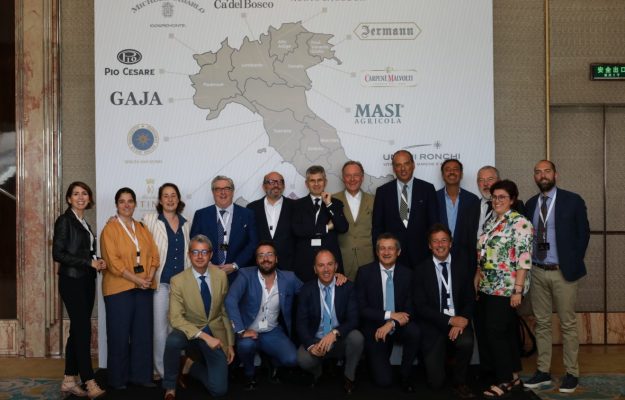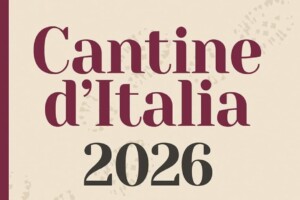The main criteria of restaurant owners’ choice of wines, and especially fine wines, for their wine lists is the brand of the “historic” companies that have been operating on the market for the longest time, even during a pandemic (84%). This choice is ahead of the wine guide awards (63%) or even famous denominations (52%). The Nomisma Wine Monitor study for the Italian Quality Wine Institute of Grandi Marchi on the national market, has revealed these data, while the final results of the study will be presented, Covid-19 health emergency permitting, between the end of this year and the beginning of 2021. Specifically, a preview of the study on restaurants (124 participants, during the period September 22- October 23, 2020, 94% of which have been mentioned in at least one of the main sector guides, 31% in the North East, 27% in the North West, 24% in the Center and 18% in the South, at an average of 420 wine labels, and 77% of which offer a tasting menu for 65 euros, on average), highlights that before the most recent restrictions the Government has imposed to curtail the spread of the coronavirus, the Coronavirus Pandemic had “bent, but not broken” the Italian catering sector. One third of the participants had predicted a great recovery in wine sales, higher than the values compared to 2019, while 50%, however, estimated they would stay on more or less the same level (and only 17%, therefore, saw “doom and gloom”).
“Brands play an important role for several reasons. First of all, they are an index of reliability, and in this moment of such great uncertainty, the customer probably considers it appropriate to adopt a more prudential approach in the purchasing process”, pointed out Piero Mastroberardino, president of the Institute (which brings together 19 of the most symbolic Italian wine companies: Alois Lageder, Ambrogio and Giovanni Folonari Estates, Antinori, Argiolas, Col d'Orcia, Ca’ del Bosco, Carpenè Malvolti, Donnafugata, Gaja, Jermann, Lungarotti, Masi, Mastroberardino, Michele Chiarlo, Pio Cesare, Rivera, Tasca d’Almerita, Tenuta San Guido, and Umani Ronchi, for a total turnover of 560 million euros and a value of sales abroad equal to 6% of the entire Italian wine exports). Well-known brands are often associated with a higher turnover rate, which in this phase is fundamental, both because of its ability to reinstate efficiency to management in general, and also because it reduces the risk of finding an unsold item in the wine cellar of a restaurant, in the unfortunate hypothesis of sudden restrictive measures on their operating activities”.
The pandemic and the lockdown have both, however, left their mark. In order to respond positively to the health safety restrictions imposed, only 23% of the restaurants surveyed were able to reopen before summer, while maintaining the same operational capacity as they did before the lockdown was put in place. All the others had to forsake seating (in other words, the remaining 77% of the restaurants interviewed, and 12% were forced to reduce seating capacity by 50%). Changes were substantial from an organizational point of view as well, including investing in training for the new hygiene and health regulations (55% of the interviewees), having to work with fewer staff (40%) and changes in the menus and wine lists (20%). In the specific case of wine lists, foreign wines offered on the menu paid the highest price (23% of restaurants reduced or even eliminated foreign wines). On the contrary, local wines and / or wines from the same area as the restaurant, have experienced less drastic “cuts”, as 11% of restaurants declared that they have even increased the number of local wines on the menu.
Overall, and up until last week, wine sales of the restaurants interviewed showed a negative sign (that is, the difference between those who declared increases and those who instead suffered decreases in sales), which was mainly due to the fact that there were far fewer customers (36% justified this decrease due to the above-mentioned reduction in seating capacity). The variation inevitably impacted wine producers: 28% of restaurant owners declared that they had reduced the number of regular suppliers (against 61% of those who maintained their regular suppliers). In 2019, 68% of restaurants made wine purchases on average every week or every month, while during this pandemic the percentage has decreased (55%).
Finally, there are many similarities with what is happening in civil society and in the main economic sectors regarding the trends that will consolidate in the sector in the next few years. And, actually, it could not be otherwise. “One of the main changes that the coronavirus has imposed, and which will continue over the next few years, is digitalization, considering above all the promotional and management context (presence on social networks, online booking methods, relationships with suppliers). One in four restaurant owners has confirmed this, alongside more efficient management of spaces”, explained Denis Pantini, Nomisma Wine Monitor manager.
Most of all, though, this pandemic should leave Italians with a greater awareness of the value of the catering sector, in terms of food quality and wines offered, in addition to the socio-economic implications that the sector produces on the entire agro-food chain. This was the opinion of 65% of the restaurant owners interviewed, before the most recent Ministerial Decree, which has imposed further restrictions on the activities of public businesses. Obviously, at this point, it remains to be seen how the situation of the on-trade channel will evolve which, we must remember, up to last year accounted for one third of the volume of wine sales in our country. We will find out perhaps in the next few hours.
Copyright © 2000/2025
Contatti: info@winenews.it
Seguici anche su Twitter: @WineNewsIt
Seguici anche su Facebook: @winenewsit
Questo articolo è tratto dall'archivio di WineNews - Tutti i diritti riservati - Copyright © 2000/2025









































































































































































































